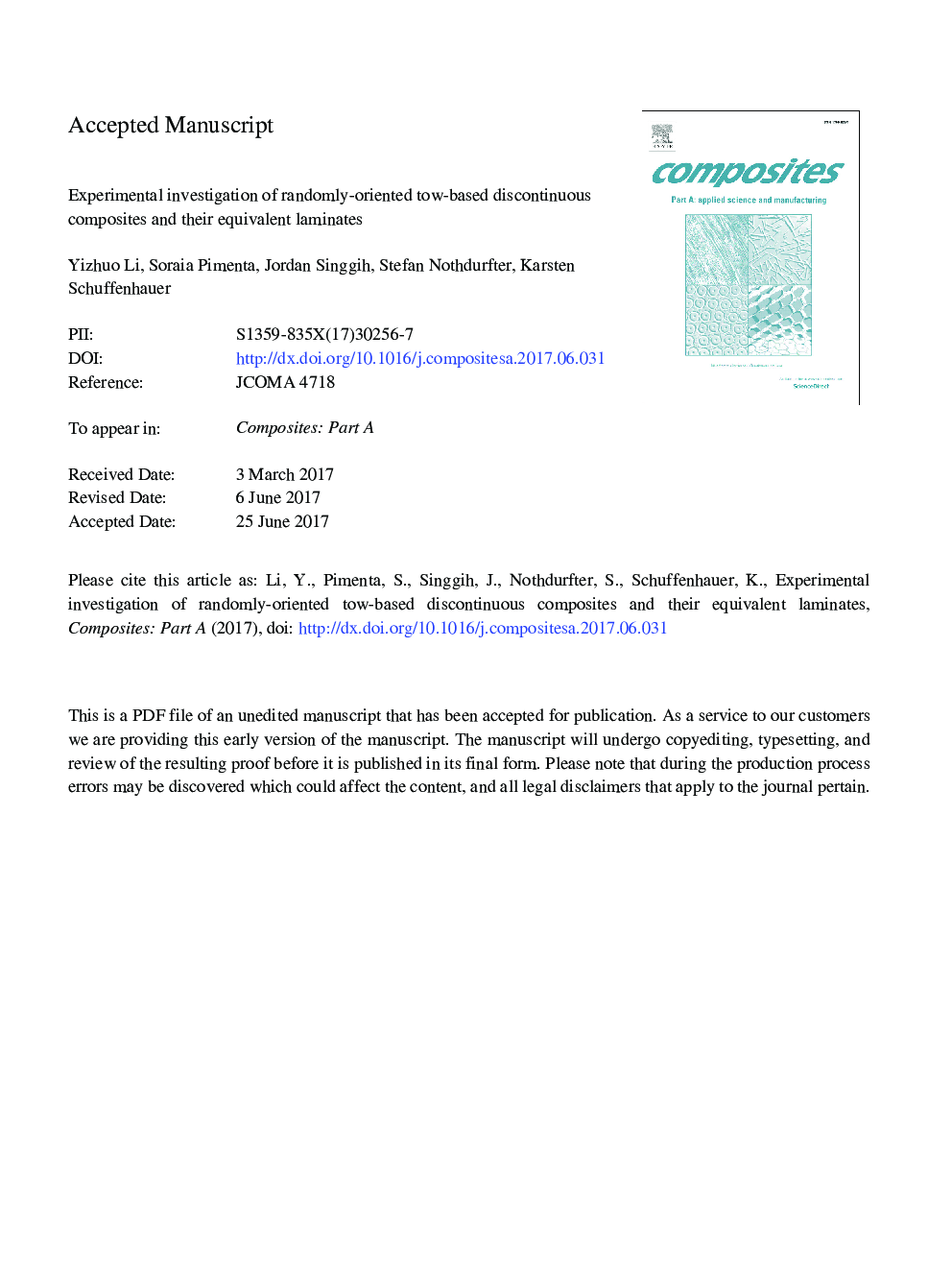| Article ID | Journal | Published Year | Pages | File Type |
|---|---|---|---|---|
| 5439447 | Composites Part A: Applied Science and Manufacturing | 2017 | 23 Pages |
Abstract
The equivalent laminate assumption is a commonly-used method to model the random architecture of discontinuous composites, but which has never been validated experimentally. This study aims to verify the equivalent laminate assumption, focusing on tow-based discontinuous composites (TBDCs), which have higher fibre-content and thus improved modulus and strength, compared to conventional discontinuous-fibre composites. This verification was achieved by manufacturing and testing (i) actual TBDCs with randomly oriented tows and (ii) their equivalent laminates (ELs), at two different tow thicknesses. The results show that ELs exhibit the same failure mechanisms as TBDCs, and are similarly weakened by an increase in tow thickness. However, ELs lack the spatial variability in local fibre-content and local tow orientations, which makes ELs stronger than TBDCs. Therefore, the equivalent laminate assumption is suitable for predicting the modulus of discontinuous composites, but cannot predict their strength without considering the local variability in their microstructure.
Keywords
Related Topics
Physical Sciences and Engineering
Materials Science
Ceramics and Composites
Authors
Yizhuo Li, Soraia Pimenta, Jordan Singgih, Stefan Nothdurfter, Karsten Schuffenhauer,
